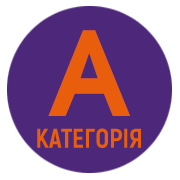МОЖЛИВОСТІ ЗАСТОСУВАННЯ EXERGAMING У ПРОЦЕСІ ФІЗИЧНОГО ВИХОВАННЯ ЯК ЗАСОБУ ПІДВИЩЕННЯ РУХОВОЇ АКТИВНОСТІ
DOI:
https://doi.org/10.32782/2522-1795.2023.14.26Ключові слова:
відеоігри, цифрові ігри, фізичне виховання, ексергеймінг, ексерігри.Анотація
У статті розкривається про ексергеймінг або активні відеоігри, які стали новою тенденцією у галузі фізичної культури, сферах фітнесу, освіти та охорони здоров’я. Метою роботи є – розкрити можливості застосування exergaming у процесі фізичного виховання, визначити його переваги та недоліки. Методи дослідження: аналіз літературних джерел та матеріалів мережі Інтернет, синтез та узагальнення. Результати. Ексергеймінг характеризуємо, як форму фізичної активності, що передбачає використання цифрових ігор, для досягнення успіхів у яких потребуються певні рухи та дії від її учасників. Exergaming в Україні зараз ще не досяг високого розвитку, однак уже активно використовуються різноманітні системи ексергеймінгу в якості альтернативних засобів фізичного виховання і спорту, і стають щоразу більш затребуваними. У статті наведено приклади та варіанти ексерігор, які можна застосовувати вдома та в навчально- тренувальних чи оздоровчих центрах (танцювальні килимки, ігрові контролери та велоергометри; симулятори ігор і бойових мистецтв із віртуальним середовищем для індивідуальних і командних видів спорту; «віртуальні тренери» та ігрові платформи тренувань, тощо). Висновки. Аналіз показує, що ексергеймінг має низку сильних сторін, зокрема: доступність, індивідуалізація, підвищений інтерес та підвищена мотивація. Водночас визначено основні недоліки та загрози, серед яких виділяємо: збільшення часу перед екраном, неможливість замінити традиціні фізичні вправи; важкість контролю та неточність витраченої енергії. Exergaming має потенціал для збільшення фізичної активності, і, таким чином, позитивно впливає на фізичні, когнітивні та психосоціальні харектеристики особистості, є потенційно інноваційного стратегією та альтернативним шляхом, що сприяє збільшенню рухової активності.
Посилання
Benzing V., Schmidt M. Exergaming for children and adolescents : strengths, weaknesses, opportunities and threats. Journal of clinical medicine. 2018. Vol. 7(11), pp. 422.
Owen N., Sparling P. B., Healy G. N., Dunstan D. W., Matthews C. E. Sedentary behavior: emerging evidence for a new health risk. In Mayo Clinic Proceedings. 2010. Vol. 85, Issue 12, P. 1138–1141.
Best J. R. Exergaming in youth. Zeitschrift für Psychologie. 2013. Vol. 221. Issue 2.
Chukhlantseva N., Chukhlantsev A. The Use of Active Video Games in Physical Education and Sport. Traektoriâ Nauki. 2017. Vol. 3(2). 4.1–4.11. URL: http://dx.doi.org/ 10.22178/pos.19-5 (date of access: 06.02.2023).
Чухланцева Н. В., Чухланцев А. І. Exergaming : сполучення фізичних вправ і ігор. Актуальні проблеми фізичного виховання різних верств населення. Харків, 2017. С. 186–194.
Lavrin H. Z., Angeliuk I. O., Krytska A. M. Analyses of modern google physical education applications (for android). International scientific conference «Development of physical culture and sports amidst martial law» : conference proceedings, October 5–6, 2022. Częstochowa, Republic of Poland : «Baltija Publishing». 2022. P. 152–158.
Lavrin G., Sereda I., Kuczer T., Grygus I., Zukow W. The Results of Student’s Survey on Models of Physical Education in Universities and Motivations to Encourage for Active Participation in Physical Education. International Journal of Applied Exercise Physiology. 2019. Vol. 8. no. (2), P. 140–143. URL: https://doi.org/10.30472/ijaep. v8i2.391 (date of access: 06.02.2023).
Sereda I., Lavrin H., Kucher T., Grygus I., Napierała M., Muszkieta R., ... & Kałużny K. Effect of yoga exercises on the senior schoolchildren’s biological age during physical education. Journal of Physical Education and Sport. 2021. Vol. 21. P. 2782–2789. URL: https://doi.org/ 10.7752/jpes.2021.s5370 (date of access: 10.02.2023).
Мостецька О. І., Лаврін Г. З. Застосу- вання сучасних гаджетів у процесі фізичного виховання. Проблеми і перспективи розвитку спортивних ігор та одноборств у закладах вищої освіти : збірник статей ХVІІІ наукової конференції 04 лютого 2022 р., Харків, 2022. С. 142–145.
O’Loughlin E. K., Dutczak H., Kakinami L., Consalvo M., McGrath J. J., & Barnett T. A. Exergaming in youth and young adults: a narrative overview. Games for Health Journal. 2020. Vol. 9. no. (5), P. 314–338.
Abedelmalek S., Aloui K., Bouzgarou M. D., Adam H., Souissi N., Chtourou H. Exergaming During Ramadan Intermittent Fasting Improve Body Composition as Well as Physiological and Psychological Responses to Physical Exercise in Adolescents with Obesity. Frontiers in Nutrition. 2022. Vol. 9.
Liu R., Menhas R., Dai J., Saqib Z. A., & Peng X. Fitness apps, live streaming workout classes, and virtual reality fitness for physical activity during the COVID-19 lockdown: an empirical study. Frontiers in Public Health. 2022. Vol. 10.
Moholdt T., Weie S., Chorianopoulos K., Wang A. I., & Hagen K. Exergaming can be an innovative way of enjoyable high-intensity interval training. BMJ open sport & exercise medicine. 2017. Vol. 3. no.1, e000258.
What is exergaming? URL: https:// exergame.com/solutions/what-is-exergaming/ (date of access: 10.02.2023).
Bogost I. (2010). Persuasive games: The expressive power of videogames. mit Press. URL: https://doi.org/10.1093/llc/fqn029 (date of access: 10.02.2023).
Gao Z., Lee J. E., Pope Z., & Zhang D. Effect of active videogames on underserved children’s classroom behaviors, effort, and fitness. Games for Health Journal. 2016. Vol. 5(5), Р. 318–324.
Gao Z., & Chen S. Are field‐based exergames useful in preventing childhood obesity? A systematic review. Obesity Reviews. 2014. Vol. 15(8), Р. 676-691.
Barry G., Galna B., & Rochester L. The role of exergaming in Parkinson’s disease rehabilitation: a systematic review of the evidence. Journal of neuroengineering and rehabilitation. 2014. Vol. 11(1), Р. 1–10.
Benzing V., Eggenberger N., Spitzhüttl J., Siegwart V., Pastore-Wapp M., Kiefer C., Slavova N., Grotzer M., Heinks T., Schmidt M., et al. The Brainfit study: Efficacy of cognitive training and exergaming in pediatric cancer survivors- A randomized controlled trial. BMC Cancer. 2018. Vol. 18. no. 18.
Zeng N., Pope Z., Lee J. E., & Gao Z. A systematic review of active video games on rehabilitative outcomes among older patients. Journal of Sport and Health Science. 2017. Vol. 6. no. (1), Р. 33–43.
Adamo K. B., Rutherford J. A., & Goldfield G. S. Effects of interactive video game cycling on overweight and obese adolescent health. Applied Physiology, Nutrition, and Metabolism. 2010. Vol. 35 no. 6, Р. 805–815.
Biddiss E., Irwin J. Active video games to promote physical activity in children and youth: a systematic review. Archives of pediatrics & adolescent medicine. 2010. Vol. 164. no. 7, Р. 664–672.
EA Sports Active/ Wikepedia. URL: https://en.wikipedia.org/wiki/EA_Sports_Active (date of access: 11.02.2023).
Scott D. Technology in physical education: assessing the impact OF the walljam interactive wall on students and staff. in edulearn15 proceedings. 2015. P. 1653–1653. URL: https://library.iated.org/view/SCOTT2015TEC (date of access: 11.02.2023).
Witherspoon Lisa. EXERGAMING. URL: http://healthysd.gov/wp-content/uploads/2014/ 11/exergaming.pdf (date of access: 11.02.2023).
Staiano A. E., Calvert S. L. Exergames for physical education courses: Physical, social, and cognitive benefits. Child Dev. Perspect. 2011. Vol. 5. no. 2, P. 93–98.
Neumann D. L., Moffitt R. L., Thomas P. R., Loveday K., Watling D. P., Lombard C. L., ... & Tremeer M. A. A systematic review of the application of interactive virtual reality to sport. Virtual Reality. 2018. Vol. 22. no. 3, P. 183–198.
Page Z. E., Barrington S., Edwards J., & Barnett L. M. Do active video games benefit the motor skill development of non-typically developing children and adolescents : A systematic review. Journal of science and medicine in sport. 2017. Vol. 20. no. 12. P. 1087–1100.
Pope Z., Zeng N., & Gao Z. The effects of active video games on patients’ rehabilitative outcomes: A meta-analysis. Preventive Medicine. 2017. Vol. 95. P. 38–46.
Hickman R., Popescu L., Manzanares R., Morris B., Lee S. P., & Dufek J. S. Use of active video gaming in children with neuromotor dysfunction: a systematic review. Developmental Medicine & Child Neurology. 2017. Vol. 59(9). P. 903–911.
Knols R. H., Vanderhenst T., Verra M. L., & de Bruin E. D. Exergames for patients in acute care settings: systematic review of the reporting of methodological quality, FITT components, and program intervention details. Games for health journal. 2016. Vol. 5 Issue 3, P. 224–235.
Mishra J., Anguera J. A., & Gazzaley A. Video games for neuro-cognitive optimization. Neuron. 2016. Vol. 90, Issue 2, P. 214–218.
Gao Z. Fight fire with fire? Promoting physical activity and health through active video games. Journal of sport and health science. 2017. Vol. 6(1). 1.
Spiegel J. S. (2018). The ethics of virtual reality technology: Social hazards and public policy recommendations. Science and engineering ethics. Vol. 24(5), P. 1537–1550.
Au J., Buschkuehl M., Duncan G. J., & Jaeggi S. M. There is no convincing evidence that working memory training is NOT effective: A reply to Melby-Lervåg and Hulme (2015). Psychonomic Bulletin & Review. 2016. Vol. 23(1), P. 331–337.
Melby-Lervåg M., Hulme C. (2016). There is no convincing evidence that working memory training is effective: A reply to Au et al.(2014) and Karbach and Verhaeghen (2014). Psychonomic Bulletin & Review. Vol. 23(1), P. 324–330.
Benzing V., Chang Y. K., Schmidt M. Acute physical activity enhances executive functions in children with ADHD. Scientific reports. 2018. Vol. 8(1), P. 1–10.
Desai R. A., Krishnan-Sarin S., Cavallo D., Potenza M. N. Video-gaming among high school students: health correlates, gender differences, and problematic gaming. Pediatrics. 2010. Vol. 126(6), e1414-e1424.
##submission.downloads##
Опубліковано
Як цитувати
Номер
Розділ
Ліцензія

Ця робота ліцензується відповідно до Creative Commons Attribution-NonCommercial-NoDerivatives 4.0 International License.












